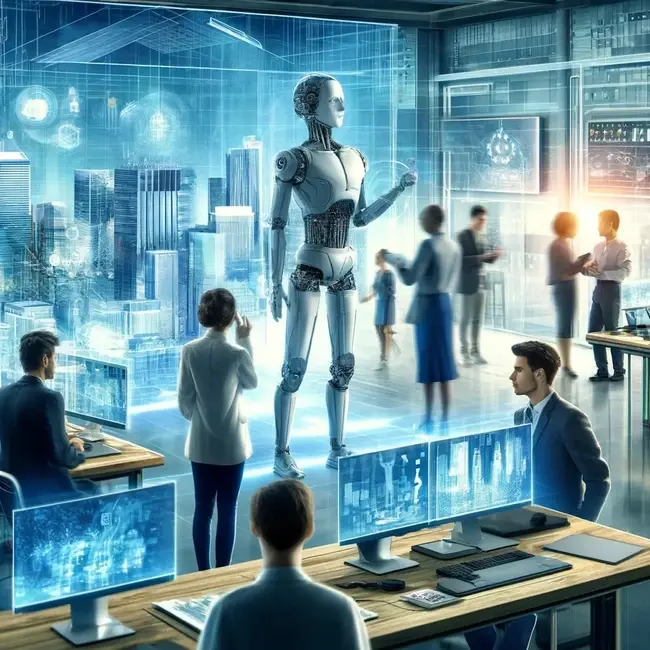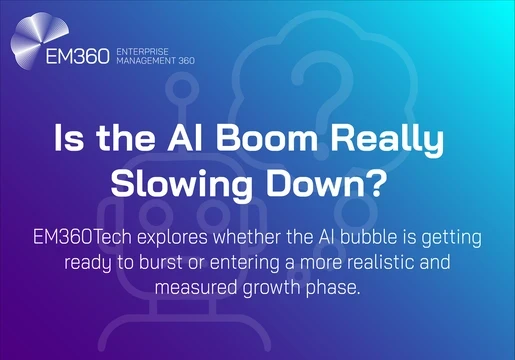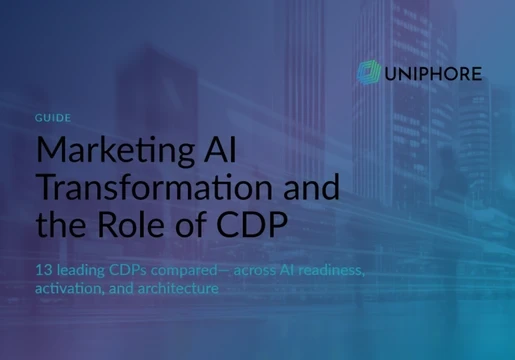The integration of Artificial Intelligence (AI) and generative AI into the Architecture, Engineering, and Construction (AEC) industry represents a transformative shift, leveraging advanced technologies to improve the efficiency, sustainability, and creativity of building processes. AI and generative AI are impacting every stage of a project from conceptual design to facilities management.

Generative Design for Enhanced Creativity and Efficiency
-
Technologies: Deep learning algorithms are trained on massive datasets of existing building plans, materials, and environmental factors.
-
Benefits:
-
Faster Design Exploration: Architects can input project goals and constraints, and the AI generates numerous design options that adhere to those parameters. This allows for quicker exploration of a wider design space and identification of optimal solutions.
-
Performance Optimization: Generative AI can analyze factors like energy efficiency, structural integrity, and material usage during design iteration. This facilitates the creation of high-performing buildings that meet sustainability goals and minimize environmental impact.
-
Code Compliance Automation: Generative models can be trained on specific building codes and regulations. They can then analyze a design and highlight potential code violations, saving architects time and ensuring designs are compliant from the outset.
-
AI for Improved Project Management and Decision Making
-
Technologies: Machine learning algorithms are trained on historical project data, including costs, timelines, and resource allocation. Additionally, computer vision can be used to analyze real-time data from construction sites.
-
Benefits:
-
Predictive Project Management: AI can analyze historical data to predict project timelines, resource needs, and potential risks with greater accuracy. This allows for proactive planning, mitigation of delays, and cost control.
-
Construction Site Optimization: AI-powered cameras and sensors can monitor construction sites in real-time, tracking worker movement, identifying safety hazards, and monitoring material usage. This data can be used to optimize workflows, improve safety protocols, and ensure efficient material utilization.
-
Data-Driven Decision Making: Throughout the AEC process, vast amounts of data are generated. AI can analyze this data to identify trends and patterns, providing valuable insights that can inform decision-making at every stage. This can lead to improved project outcomes, reduced rework, and better resource allocation.
-
AI for Automation and Robotics
-
Technologies: AI-driven robotics are increasingly being used in construction for tasks like bricklaying, welding, painting, and even complex assembly operations. These robots can work faster, with greater precision, and in hazardous conditions without the safety risks associated with human workers.
-
Benefits:
-
Increased Efficiency and Productivity: AI-enhanced robots and automated machinery can work continuously without the need for breaks, shifts, or sleep. This capability significantly boosts productivity, allowing for faster completion of construction projects. Robots can perform repetitive tasks more quickly and accurately than human workers, reducing the time required for tasks like bricklaying, painting, or installing drywall.
-
Improved Quality and Precision: Robotics in construction can achieve a high level of precision that reduces the likelihood of errors compared to manual labor. This precision ensures better quality construction with tighter adherence to specified design details, which can enhance the overall durability and integrity of structures. Automation also standardizes construction processes, leading to consistent and high-quality output.
-
Enhanced Safety: Construction sites are inherently hazardous, but AI-driven robotics can undertake risky tasks such as working at heights, lifting heavy materials, or operating in unsafe environments (like extreme temperatures or toxic atmospheres). This reduces the risk of injuries and accidents, safeguarding human workers from dangerous conditions and potentially reducing workers' compensation and insurance costs.
-
Cost Reduction: Although the initial investment in robotics and automation technology can be significant, these costs are often offset by long-term savings in labor costs, reduced waste, and more efficient use of materials. Robots also minimize the incidence of construction errors and rework, which can be expensive and time-consuming.
-
Addressing Labor Shortages: Many regions face a shortage of skilled labor in the construction sector. Automation and robotics provide a viable solution to this problem by compensating for the lack of human workers. They also allow existing construction teams to focus on more complex, creative, or strategic tasks that cannot be easily automated.
-
Sustainability: Robotic systems can be designed to use materials more efficiently and to minimize waste during construction. For instance, precise cutting of materials and optimized routing of machinery reduce excess and can help projects meet higher standards of environmental sustainability. This is particularly important as the industry faces increasing pressure to reduce its carbon footprint.
-
Data Collection and Analysis: AI-enabled robots can collect huge amounts of data from construction sites, which can be analyzed to improve future project planning, execution, and maintenance. This data includes information on work progress, resource utilization, and operational efficiencies, which can be used to refine project strategies and optimize performance continually.
-
Adaptive and Responsive Construction Practices: AI systems can adjust operations in response to changing conditions on the site, such as weather changes or unexpected construction challenges. This adaptability ensures that construction activities can proceed with minimal downtime and that projects remain on schedule despite unforeseen issues.
-
AI for Facilities Management
-
Technologies: Incorporating AI into facilities management involves a blend of various technologies that enhance the efficiency, sustainability, and effectiveness of managing building operations. Internet of Things (IoT) devices play a crucial role in AI-driven facilities management by providing real-time data from various sensors and devices spread throughout a facility. These can include sensors for monitoring temperature, humidity, light levels, energy usage, and security systems. The data collected is essential for AI algorithms to analyze and make informed decisions. Building Information Management (BIM) software is enhanced with AI to manage the physical and functional characteristics of spaces. AI can analyze BIM data to optimize building operations and maintenance schedules based on how spaces are used. BIM integrated with AI also aids in managing space utilization and planning future renovations or expansions efficiently. AI-driven energy management systems are used to control and optimize building energy use. They adjust heating, ventilation, air conditioning (HVAC), and lighting systems based on occupancy patterns and external weather conditions to minimize energy waste and improve comfort. Machine learning models are trained on historical data to predict future conditions and outcomes. In facilities management, this can mean predicting HVAC system failures before they occur or forecasting when a building will experience peak energy usage. Predictive analytics helps in proactive maintenance, reducing downtime and extending the lifespan of equipment. AI enhances security within facilities by analyzing video surveillance footage in real time to detect anomalies, unauthorized access, or potential security threats. Facial recognition technology and motion detection can also be integrated to enhance the effectiveness of security measures. Digital twins create a virtual replica of a physical facility, incorporating real-time data feeds from various sources. AI uses this model to simulate different scenarios, optimize building operations, and predict the impact of changes in layout or systems without physical trials.
-
Benefits:
-
Enhanced Efficiency and Cost Reduction: AI optimizes the operation of various systems within a facility, such as HVAC, lighting, and security. By analyzing data from IoT sensors and other sources, AI can automatically adjust settings to reduce energy consumption, minimize waste, and lower maintenance costs through predictive maintenance schedules. This not only cuts down operational costs but also extends the lifespan of equipment.
-
Predictive Maintenance: Instead of relying on scheduled or reactive maintenance, AI employs predictive analytics to anticipate equipment failures before they occur. By analyzing historical data and real-time inputs from machines, AI can predict when a piece of equipment is likely to fail and prompt maintenance activities, thereby avoiding costly downtime and emergency repairs.
-
Improved Energy Management: AI systems can dynamically manage energy usage by adjusting building systems based on real-time data, such as occupancy levels and weather conditions. This helps in significantly reducing energy waste and can contribute to achieving sustainability goals, such as reducing a building’s carbon footprint.
-
Enhanced Security: AI improves building security through advanced surveillance techniques, including real-time video analysis and anomaly detection. AI can identify unusual behavior, unauthorized access, and other potential security threats quickly and accurately, enhancing the safety of occupants.
-
Optimized Space Utilization: AI can analyze how different spaces within a building are used, providing insights into underutilized or overcrowded areas. This information can be vital for space planning and can help management make informed decisions about potential lease savings, renovations, or adjustments to workspace layouts to maximize efficiency and occupant satisfaction.
-
Disaster Preparedness and Response: AI can play a crucial role in disaster management within facilities by predicting potential hazards like floods or fires based on environmental data and building conditions. It can also help in coordinating response efforts during emergencies by managing communication systems and guiding evacuation procedures.
-
Automation of Routine Tasks: AI automates routine administrative tasks in facilities management, such as processing work orders, managing inventory, and handling tenant communications. This automation frees up human managers to focus on more strategic tasks and decision-making.
-
Additional Use Cases
-
Automated Content Generation: AI can be used to generate reports, proposals, and other project documentation, freeing up AEC professionals to focus on more strategic tasks.
-
Virtual Assistants and Chatbots: AI-powered virtual assistants can answer routine questions, schedule meetings, and manage project documents, improving communication and streamlining workflows.
-
Virtual Reality (VR) and Augmented Reality (AR): Generative AI can also enhance VR and AR applications within the AEC industry. These technologies allow for immersive design visualization, helping clients and stakeholders better understand and experience a building design before construction begins. Moreover, AR can assist workers on-site by providing real-time, overlay information about construction processes and safety measures.
-
Data Integration and Management: AI systems can integrate and manage vast amounts of data from different stages of a construction project, from initial design drafts to post-construction facility management. This integration fosters better collaboration among stakeholders and ensures that all decisions are data-driven.
The Future of AI in AEC
As AI technology continues to evolve, we can expect even more transformative applications in the AEC industry. Here are some potential future directions:
-
Generative Design for Entire Cities: AI could be used to design entire cityscapes, optimizing infrastructure, traffic flow, and energy use.
-
Personalized Construction: Generative AI could be used to create custom-built homes that perfectly match the needs and preferences of individual homeowners.
-
Autonomous Construction Equipment: AI-powered robots and drones could handle dangerous or repetitive tasks on construction sites, improving safety and efficiency.
The integration of AI and generative AI has the potential to significantly improve efficiency, safety, and sustainability in the AEC industry. As these technologies continue to develop, we can expect even more exciting innovations that will reshape the way we design, build, and manage our built environment.







Comments ( 0 )